“Mamma, mia, thatsa spicy meatball,” the red-faced “Italian” man said each time his stereotypical wife plunked down a steaming plate of spaghetti and meatballs … until the antacid commercial hit its punchline.
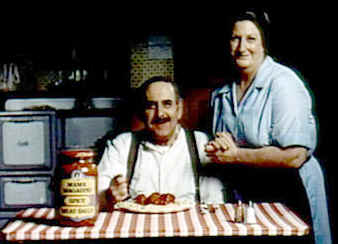
“Spaghetti and meatballs, now that’s Italian!” is found in the script of many a b-movie.
Even Lady and the Tramp have their first kiss over spaghetti and meatballs served up by Tony, the mustachioed Italian singing cook in 1955.
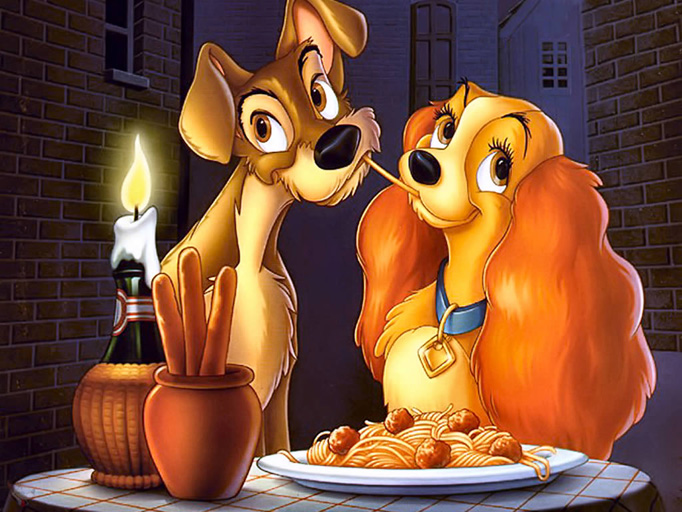
Now, it’s time for the Italian Food Rule: Spaghetti is not served topped by meatballs in sauce. Do not order “spaghetti and meatballs” in Italy! At the very least, your waiter will laugh at you. (A sighting of “spaghetti with meatballs” on a menu found anywhere in Italy means that you are eating in a tourist trap.) If pasta and meatballs are served in the same meal, the two ingredients will be served separately – the spaghetti as a primi and the meatball(s) (polpettone or polpette) as a secondo.
Spaghetti with meatballs is not an authentic Italian dish. Like tiny bowls of olive oil set out for for dunking bread (another Food Rule for another day) spaghetti served with “red sauce” and topped with meatballs is an American creation. The pasta recipe probably made its first appearance in New York or New Jersy in the late 1800s.
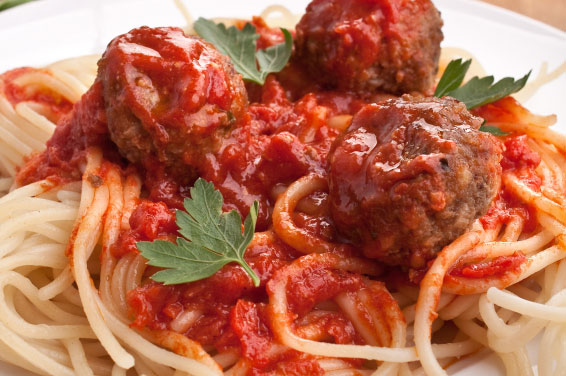
The concoction is an American adaptation developed most likely as a reaction to the socio-economic conditions experienced by a wave of Italian immigrants who arrived at the turn of the 20th century. These Italians, predominantly from the regions of Sicily and around Naples, had been through the unification of Italy (1861) and World War I (1918). They left Italy poor and started lives in America poor. Meat was costly. For special occasions, when meat was served, the portions were small – too embarrassing to sit alone on the plate. But as a topping for cheap pasta and thin tomato sauce, meatballs the size of walnuts made the platter a celebration.
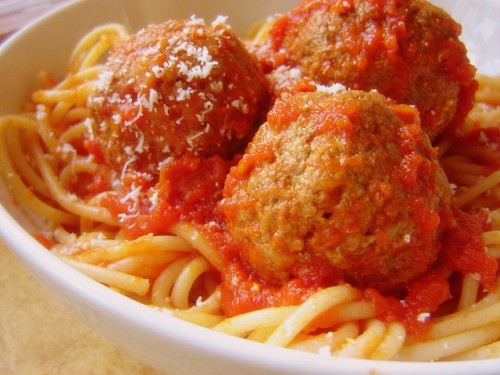
Of course, with prosperity came exageration. The platter of pasta was the same size, but the sauce became thicker, drowning the spaghetti, and the meatballs grew to the size of a kid’s fist.
The Italian-American spaghetti and meatball myth always invokes grandma’s recipe (ricetta della Nonna). In this tale, Nonna stands in her tiny kitchen, wearing a snowy-white apron around the barrel of her tummy, but showing off her still-shapely legs, waving a saucy spoon in her hand.
But the elegant Marcella Hazan, well into her 80’s, will tell all who hang on her every word about authentic Italian cooking, that the Italian Food Rule mandates: no meatballs on spaghetti. She will give you a fine recipe for pasta with a meat sauce (ragu), but outlaws untidy balls of meat that roll down a heap of over-cooked spaghetti.
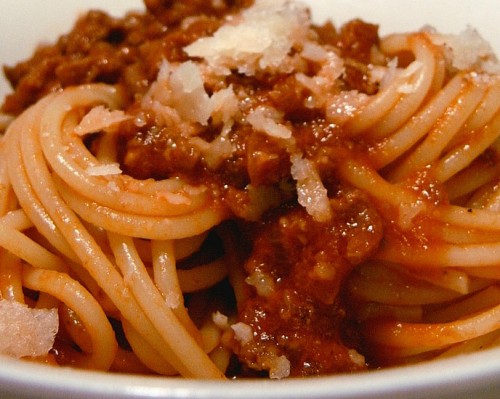
In the 1930s, the Nonna gave way to jolly Chef Boyardee (Ettore Boiardi, who left Piacenza in 1915 at age 17 to land a job in the kitchen at the Plaza Hotel in NYC. By 1928, he had invented a meatball-making machine.).
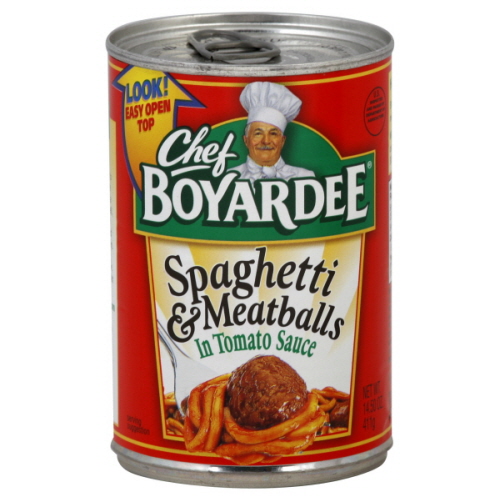
Like Tony in the Lady and the Tramp, Ettore (soon known as Hector) liked the spicy meatballs and he put them in a can with spaghetti, ready to be opened at every American kid’s lunch. And so this song (sung even on Sesame Street) was heard around scout campfires from sea to shining sea:
On top of spaghetti, All covered with cheese, I lost my poor meatball, When somebody sneezed.
It rolled off the table, And on to the floor, And then my poor meatball, Rolled out of the door.
It rolled in the garden, And under a bush, And then my poor meatball, Was nothing but mush.
The mush was as tasty , As tasty could be, And then the next summer, It grew into a tree.
The tree was all covered, All covered with moss, And on it grew meatballs, And tomato sauce.
So if you eat spaghetti, All covered with cheese, Hold on to your meatball, Whenever you sneeze.
This quintessential American song should be proof enough that spaghetti and meatballs would never find its way to a traditional Italian table, and thus, ranks very high in the list of Italian Food Rules.
